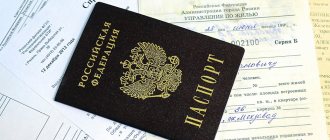Classification of forms of ownership
criteria are used to classify forms of ownership :
- according to the principle of appropriation - individual, collective or state form;
- based on emerging legal relations - private, public, joint (mixed);
- depending on the type of production relations - primitive communal, feudal, slaveholding, socialist, capitalist.
Based on the Civil Code of the Russian Federation, the following forms of ownership :
- state;
- municipal;
- public;
- private.
Each type has its own types, the classification of which depends on the direct owner. Differences in interaction also depend on the object of ownership.
Varieties
Society cannot exist without any variety of personal or social material values. The question of how they are distributed is relevant for many.
The ownership of material assets is determined in compliance with legal requirements. The law recognizes the existence of equal management conditions based on various selection criteria. Therefore, it is required to know what types and organizational forms of ownership there are, what property relationships exist among organizations, what rules exist in the Russian Federation, to what extent they are recognized as correct in modern Russia and what features exist in the provisions of the Russian Federation.
A Russian citizen can have legal ownership in the Russian Federation and be protected by law in his rights to material assets on the basis of existing legal norms. The norms are subject to the form of ownership of a private individual or organization of a legal entity, be it an LLC, a representative office of a limited liability company, a joint stock company, a state federal company or another owner of an object or objects, which are by definition.
In this regard, the Civil Code of the Russian Federation classifies 4 types of property and identifies the main managers.
State
The copyright owner is the Russian Federation. All results of labor obtained during exploitation belong exclusively to the state.
An important role in the country’s economy means:
- The need for this type is due to those industries where private business cannot exist. This is, for example, the energy supply sector or railway transport.
- The state type is characteristic of the production of public goods. These are the most important areas that include the defense capability of the state.
- Enterprises that were nationalized during the period of economic restructuring are also included.
A distinctive feature is the form of losing to private ownership in relation to economic efficiency indicators. In the case of state ownership, the interest in control is lower.
Municipal
Based on Article 8 of the Constitution of the Russian Federation, the municipal type of ownership is characterized as an independent category and is not considered state-owned. This method of management is distinguished by a specific order of ownership. The right to dispose of property is given to self-government bodies, since this right is the result of the will and interests of the local population.
Municipal ownership is considered to be the ownership of urban property, rural property and ownership of other municipal entities. Municipal assets are taken into management on the basis of the procedure established in Part 2 of Article 125 of the Civil Code of the Russian Federation. According to the regulations, the right to dispose of structures is given to local officials. In some cases, the population receives this right.
Property of a local nature is targeted. This is the basis for its characteristic aspects, operational methods, and features.
Municipal type of ownership is required to solve the following problems:
- To quickly resolve issues at the regional level.
- To solve the problems set by the state and government to local authorities.
- So that local governments can fully function.
Private
The single individual private type of ownership, given the 3 types of ownership, additionally includes the partnership and corporate varieties, which together are inferior to the state form of ownership when it comes to determining the included types.
The type of management distinguishes two main types: individual and public. Each type corresponds to legally justified subcategories that have legal characteristics. Their detailed description is contained in the Civil Code of the Russian Federation.
In turn, the individual variety is divided into the following types:
- A type of unity when all benefits belong to a single citizen who has the right to attract hired workers.
- Type of partnership , characteristic of an association of individuals, for the purpose of conducting business activities, maintaining industrial relations, which corresponds to the type and form of ownership in Russia.
- Type of cooperative . Persons who sell free shares and create capital.
The main social species is characterized by several subspecies:
- Collective. When management rights are equally divided among employees.
- State. When a city or town owns the property.
- Nationwide. If the values belong to state residents. For example, museums or memorial sites.
- Combined. An entity created by combining different types of property.
It is also important to know about the joint and shared types of management available to each person. The Russian Federation recognizes various types of management, following the forms of ownership, including the property of an enterprise in Russia may belong to private individuals living in the Russian Federation, when it can be distributed among them in equal shares under equal conditions.
Public
The owner and manager is society, designated as a collective subject.
The municipal type of ownership, public and corporate represent the organizational and legal form for each type of property and when it concerns public property separately. This variety represents three types of property ownership:
- State. The internal activities of the country are indicated here. Carrying out nationalization, construction of buildings and structures using federal budget funds.
- Collective. Affiliation with public organizations, churches, parties.
- Municipal. The property is managed by local authorities.
Types of private property
Private property is a form of relationship where property is owned and managed by one or more entities. These include both individuals and legal entities, regardless of their number.
The form of private ownership has the following types:
- individual property - an object belongs to one individual or legal entity, who receives the right to dispose of it at his own discretion;
- partnership ownership - the pooling of capital of several individuals or legal entities for the purpose of conducting common business activities, for example, an LLC or an ALC;
- Corporate ownership arises on the basis of the sale of corresponding rights in the form of shares, securities and other titles, for example - OJSC.
Private property can be any type of object that has not been withdrawn from state circulation. Historical and cultural monuments, nuclear weapons and other property cannot belong to individuals or legal entities.
Intellectual property is one of the subtypes of private ownership. This type includes:
- trademarks and service marks, logos;
- developed animal breeds and plant varieties;
- inventions, scientific discoveries, functioning models;
- entertainment activities of artists, recording and broadcasting of programs;
- literary works and works, objects of art.
Ordinary goods can also receive the status of intellectual property. The main condition is the logo, trademark, patent or other ownership right assigned to them.
Video on the topic
One of the defining structural elements of the economic system is socio-economic relations in society.
In turn, they are based on the dominant form of ownership. Property relations influence economics, politics, ideology, etc. In the broadest sense of the word, property is a historically determined form of appropriation of material goods by people. With a more thorough analysis of its content, its economic and legal aspects come to the fore. They are closely interconnected and interdependent.
Property as an economic category reflects objectively developing relationships between people regarding their appropriation of the means of production in the course of economic activity, as well as goods, services and income obtained with their help. Property as a legal category reflects, in accordance with current legislation, the entire range of real (property) rights of people in a given society. When correlating these two categories, the conclusion is indisputable that legal property relations are a form of expression, existence and consolidation in legislative and regulatory acts of property relations.
Property or real rights can be exclusive, absolute and relative and, accordingly, be expressed in relations of disposal, possession and use.
Disposal is the right of the owner to dispose of the property (land, resources, production).
Possession is the ownership of an object by a specific subject (person, family, production team, etc.), the possibility of direct influence on the object.
Use (use) - the use of a property in accordance with its purpose and at the discretion and desire of the user.
The classification of property involves the identification of two main types:
- private;
- public
World practice shows that the defining type of property in a market system is private, which comes in three main forms:
- single;
- affiliate;
- corporate.
Single ownership is characterized by the fact that an individual or legal entity implements all property relations (disposal, possession, use). As a rule, these are simple commodity producers (farms, family businesses). In addition, single property can be represented in the form of ownership of an individual private person who can use hired labor.
Partnership ownership involves the association in one form or another of property and capital of several legal entities or individuals for the purpose of carrying out common business activities. We are talking about enterprises formed on the basis of shares (means of production, land, money, material assets, innovative ideas) of the founders.
Corporate ownership is based on the functioning of capital, which is formed through the free sale of property titles - shares. Each owner of a share is the owner of the capital of the joint stock company.
Within the framework of public property, collective, state and so-called public property should be distinguished.
Collective property is formed by distributing it among the employees of the collective employed at a particular enterprise (such as a closed joint-stock company).
State property acts as the property of all members of society. However, the implementation of relations of appropriation through relations of ownership is carried out by the state apparatus, which is designed to personify the socio-economic interests of all segments of the population, professional and social groups of society.
Public property presupposes that the entire public domain belongs directly (immediately) and simultaneously to everyone and everyone individually.
“In the Russian Federation, private, state, municipal and other forms of property are recognized and protected equally” (Article 8 of the Constitution of the Russian Federation).
Other forms of ownership in our country include the following .
Individual property. This form concentrates in one subject all the listed characteristics: labor, management, disposal of income and property. In a modern economy, this may include those who are commonly called unincorporated owners. In Russia, this could be: peasants running their own farms; individual traders (including shuttle traders); private practitioners; lawyers, all those who combine work, management, disposal of income and property.
Cooperative ownership. This form is based on an association of individual owners. In a cooperative, everyone participates with their labor and property, and has equal rights in the management and distribution of income.
Shareholder ownership. This is a group of private property that is created by issuing and selling securities - stocks and bonds. The presence of securities is a distinctive feature of the joint-stock form of ownership.
Mixed forms of ownership. In this case, there is a diffusion of different forms and property relations, as a result of which the internal content of individual forms becomes more complicated. For example, private enterprise and cooperative structures can be formed within state enterprises. In the transitional economy of Russia, this process has acquired significant proportions.
Combined forms. The modern economy, in search of effective functioning and implementation of projects, comes to the unification of various forms of ownership while preserving each of them its own special content. As a result, combined forms are formed. These may include joint ventures, holdings, financial and industrial groups, concerns, trusts and other forms with equal powers to manage, distribute income and dispose of property.
The right of private property is protected by law. “Everyone has the right to own property, own, use and dispose of it, both individually and jointly with other persons” (Article 35 of the Constitution of the Russian Federation).
Forms of public ownership
Public ownership has three main forms:
- collective;
- state;
- nationwide.
The collective form means the distribution of property among members of the organization. An example of such a relationship is a closed joint-stock company (CJSC).
The right to own state property belongs to the relevant enterprises and organizations. The key feature of this form is that the object continues to be registered with the state, but under certain conditions it can be owned by authorized persons.
The national form of ownership implies that the allocated object belongs simultaneously to everyone and separately to each citizen. The legal interpretation of this type, however, has no practical application due to economic relations. That is, the national form is present in legislation, but has no content.
Property rights concept
As a concept, property rights have many definitions in the legal literature.
In most cases, it is considered from two positions: in the objective and subjective sense. Definition 1
In an objective sense, property rights are presented as a set of legally enshrined norms that protect and secure the ownership of property by certain legal entities and individuals, as well as reflecting the volume and content of the owner’s rights, methods and limits for the implementation of these rights.
Definition 2
In a subjective sense, the right of ownership means the right of ownership, use, and disposal by the owner of his property within the boundaries defined by law.
Finished works on a similar topic
- Course work Classification of property rights 440 rub.
- Abstract Classification of property rights 250 rub.
- Test work Classification of property rights 200 rub.
Receive completed work or specialist advice on your educational project Find out the cost
From the above, we can conclude about the dual nature of the concept of property rights.
The legal literature provides several classifications of property rights.
State property
State property is property owned by the Russian Federation at the federal and regional levels. Such objects include:
- state budget, state banks, gold reserves, foreign exchange and diamond funds;
- historical, cultural, artistic values and monuments;
- the country's territory, including its land, natural, water and mineral resources;
- federal-level highways, including organizations serving them;
- defensive facilities;
- municipal treasury.
State property may be assigned to municipal institutions and enterprises. Based on this right of ownership, the ability to dispose and use the relevant objects for a predetermined purpose is provided.
Classification of Honoré's property rights
The right of ownership according to Honore includes eleven elements.
- Ownership, which implies complete control of property.
- The right of use, which involves the personal use of property.
- The right to manage includes the possibility of transferring a thing to third parties and determining the purposes for its use.
- The right to receive income during the use of a thing.
- The right to capitalize the value of property, which is understood as the possibility of alienation, consumption and change of form or the right to destroy property.
- Security right, which implies protection from illegal actions in relation to the rights to this property.
- The right to will and inheritance of property.
- The right to perpetual use of ownership and disposal of property, which is not limited by time frames.
- The right to prohibit harmful use of property, that is, it provides for the obligation to refrain from using property to harm other persons.
- The owner is liable in the form of collection of the property as payment of debt obligations.
- The right to transfer one’s powers in relation to property to another person upon expiration of their term.
Need help creating a study plan? Specify a topic and receive a response in 15 minutes get help
According to researchers, this classification implies about one and a half thousand combinations of possible applications.
Contents and features of private property
Private ownership contains three main types of realization of the subjective rights of the owner. Each of these types has significant differences in the powers and rights that it provides.
- Right of ownership. The legal authority to actually possess and maintain property.
- Right to use. The authority that allows the exploitation of economic or other property, extracting useful properties from it.
- Right to disposal. Allows the owner to determine the legal fate of the property by changing its ownership, condition or purpose.
The main characteristic of the powers that the owner has is that he can exercise them at his own discretion. The owner independently disposes of his property based on his interests. The main thing is that his actions do not contradict established legislation and do not violate the rights and legitimate interests of others.
The features of private property include the following:
- The owner's well-being, security, freedom and independence increase. Economic stability appears. Owning houses and apartments increases flexibility not only in terms of housing, but also in financial terms.
- Preserving and increasing the profitability of property, if it is directly related to production, in order to minimize its payback period.
- Ensuring the development and competitiveness of property, if this concerns enterprises.








